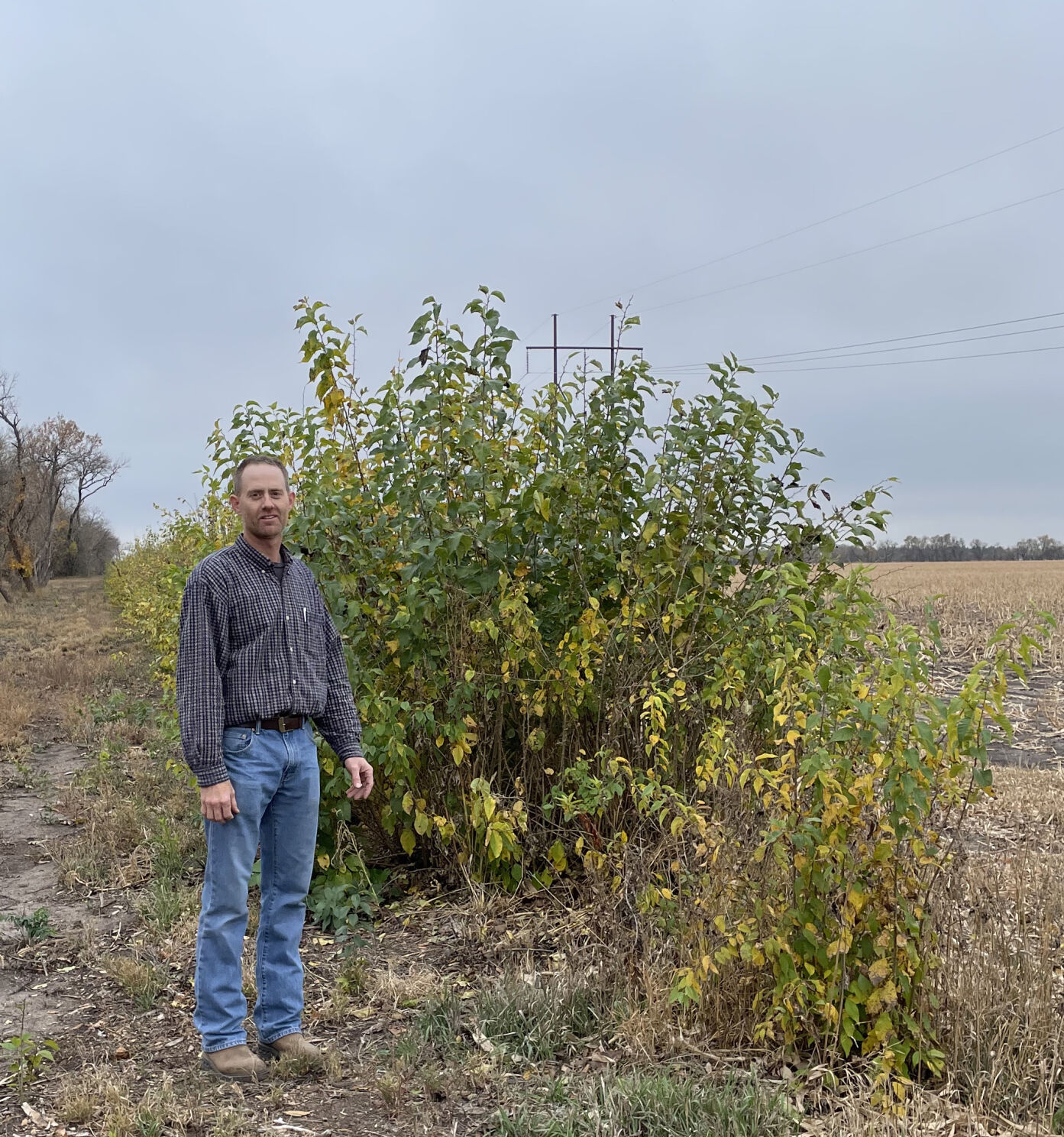With its dense, thorny branches, the Osage orange tree, or hedge tree as it more commonly known, was an early solution to keeping livestock close to home before barbed wire’s advent in 1868 (National Archives, www.archives.gov/education/lessons/barbed-wire). The expeditious growth of the hedge tree gave early livestock producers a way of marking property lines and managing their stock.
“They were planted to be horse-high, bull-proof, and hog-tight,” said James Anderson, owner and operator of Anderson Farm Enterprise LLC, Galva, Kansas.
Anderson has a special interest in those often-neglected hedgerows. While they may no longer be used as natural fencing, hedgerows are still protecting valuable topsoil in the gusty winds of the High Plains.
As Anderson says, the wind is always going to blow in Kansas.
Anderson raises wheat, soybeans, and sorghum during the growing season, but from December to March he’s devoted to maintaining hedgerows in McPherson County. While studying agricultural technology management at Kansas State University, Anderson participated in a business communications project during an ag communications class. The business his group chose was based on the idea he had for the company he operates today. With the information from that class project and his own drive to clean up decades-old hedgerows on his and his father’s farm ground, Anderson founded Anderson Farm Enterprise LLC.
In his business, Anderson offers agricultural tree services such as clearing pastures and harvesting hedgerows and sells hedge posts, firewood, while marketing his 100% American-made treesaw blades. Through his experience with harvesting his own hedgerows, Anderson found flaws in tree sawblades on the market and decided to design his own. His own ingenuity and skills helped make the design a reality.
Partnering with metal fabricators in McPherson and Wellington gave him the resources to improve upon his original design as he saw fit. With no other full-time employees, he soon learned that time was a valuable resource. Where he would once trim trees for customers, he now rents out skid steer-mounted tree saws to area farmers and ranchers who want to clean up their pastures and hedgerows.
Anderson favors harvesting hedgerows instead of pushing them over for many reasons, but the main one is for erosion control. He also knows the amount of time and effort it takes to clear the roots of the established trees and get the ground ready to farm. Many farmers don’t see their hedgerow as a renewable resource. Anderson said even 20-year-old trees can be harvested for fencing materials.
As wildfires have burned significant acres across Kansas in the last several years, Anderson saw the demand for suitable hedge posts skyrocket.
This sprouted the next branch of his business. Harvesting hedgerows meant Anderson soon had an abundance of downed trees. When the clearing is done, he stacks his inventory by size and shape. The straightest sections are sorted off for corner posts and fence posts. The not-so-straight pieces often become firewood. Anderson said hedge wood makes excellent fence posts because the hard wood is resistant to rot and won’t rust through like some metal posts.
Anderson would like to see that same resilience developed in the next generation of our human population as well.
“Taking care of what we have as agriculture producers, including our trees, will go a long way towards keeping people fed, clothed, fueled and also warmed,” he said.
Anderson worries that with the rise of technology the knowledge and the work ethic of those who came before us is dwindling.
“I believe the biggest unseen loss we have in this country is we are losing skills of trades and survival,” Anderson said.
To combat this, he works to be a student of how prior generations worked and lived and finds it very rewarding.
“We may have new methods of doing things, but much of the same work remains,” he said. “My dad talks about how hedgerows used to be maintained with axes and buck saws before chainsaws were available.”
Anderson may be eager to learn about the old ways, but he looks for modern ways to tackle those tasks. A tour of his farm gives a glimpse into how he sees or has found room for improvement in tools and equipment of all kinds. Much of it revolves around ways to maintain or protect trees of all kinds.
Anderson is a conservationist unlike some the agricultural community has known and they would be doing themselves a favor to meet him.
Jennifer Theurer can be reached at 620-227-1858 or [email protected].




